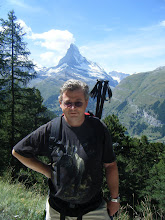A unique institution
Last weekend we made a short trip to Burgundy (the region of France, not the much larger medieval duchy, which extended up into Flanders and which is the backdrop for my soon to be published novel). We were able to visit a building which is both an architectural treasure and the embodiment of a great institution.
In 1443, Burgundy was still ravaged by the Hundred Years War and the lawlessness which followed it and the people of Beaune were destitute. Against that background, Nicolas Rolin, chancellor to Philip the Good, the Duke of Burgundy, and his wife, Guigone de Salins, decided to set up a hospital for the sick that would admit patients free of charge. The project would be financed by a small number of wealthy paying patients, who would have their own rooms,, and - more importantly - by a grant of land. Located in one of the most prestigious wine-growing regions in Europe, this land - and the wine it produces - remains the main source of funding to this day and renders the institution self-financing.
The Hotel-Dieu, as it was then know, turned out to be a masterpiece of design and engineering. Rolin was anxious to create a building that would be pleasing to the eye and what resulted is still a delight to behold. The interior courtyard roof, decorated with patterns of coloured glazed tiles, is especially spectacular (it was restored in the early 20th century). The Room of the Poor , where the non-paying patients were housed (restored in the 19th century), and the chapel are the most outstanding elements of the interior. Rolin insisted that it be built over a river - in order to have access to running water - and this greatly complicated the construction of the foundations. Nevertheless, despite financial troubles and other complications, the hospital admitted its first patient on 1452.
Over the centuries the institution suffered many vicissitudes. The Revolution led to the temporary expulsion of the nuns and the destruction of most of the statuary in the chapel. The greatest artistic treasure of all, the polyptych over the altar painted by the Flemish artist, Rogier van der Weyden, depicting the lat Judgement, was safely hidden at the time and is now back on proud display. At the time the name of the institution was changed to the Hospices de Beaune.
Nowadays, the building no longer functions as a hospital, that role having been taken over by a custom-built building on the outskirts of Beaune (it is still financed by the proceeds of the annual wine auction). Instead, visitors can come and admire its beauty and learn about how medicine was practised down the centuries.
It is one of France's must-sees!
In 1443, Burgundy was still ravaged by the Hundred Years War and the lawlessness which followed it and the people of Beaune were destitute. Against that background, Nicolas Rolin, chancellor to Philip the Good, the Duke of Burgundy, and his wife, Guigone de Salins, decided to set up a hospital for the sick that would admit patients free of charge. The project would be financed by a small number of wealthy paying patients, who would have their own rooms,, and - more importantly - by a grant of land. Located in one of the most prestigious wine-growing regions in Europe, this land - and the wine it produces - remains the main source of funding to this day and renders the institution self-financing.
The Hotel-Dieu, as it was then know, turned out to be a masterpiece of design and engineering. Rolin was anxious to create a building that would be pleasing to the eye and what resulted is still a delight to behold. The interior courtyard roof, decorated with patterns of coloured glazed tiles, is especially spectacular (it was restored in the early 20th century). The Room of the Poor , where the non-paying patients were housed (restored in the 19th century), and the chapel are the most outstanding elements of the interior. Rolin insisted that it be built over a river - in order to have access to running water - and this greatly complicated the construction of the foundations. Nevertheless, despite financial troubles and other complications, the hospital admitted its first patient on 1452.
Over the centuries the institution suffered many vicissitudes. The Revolution led to the temporary expulsion of the nuns and the destruction of most of the statuary in the chapel. The greatest artistic treasure of all, the polyptych over the altar painted by the Flemish artist, Rogier van der Weyden, depicting the lat Judgement, was safely hidden at the time and is now back on proud display. At the time the name of the institution was changed to the Hospices de Beaune.
Nowadays, the building no longer functions as a hospital, that role having been taken over by a custom-built building on the outskirts of Beaune (it is still financed by the proceeds of the annual wine auction). Instead, visitors can come and admire its beauty and learn about how medicine was practised down the centuries.
It is one of France's must-sees!
 |
| The courtyard |
 |
| The room of the poor |
 |
| The pharmacy |

